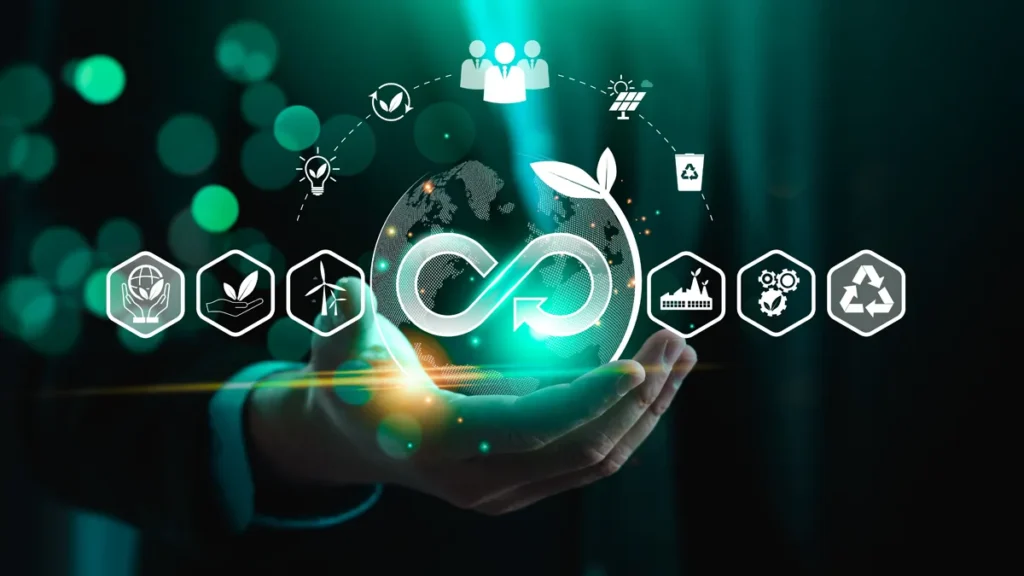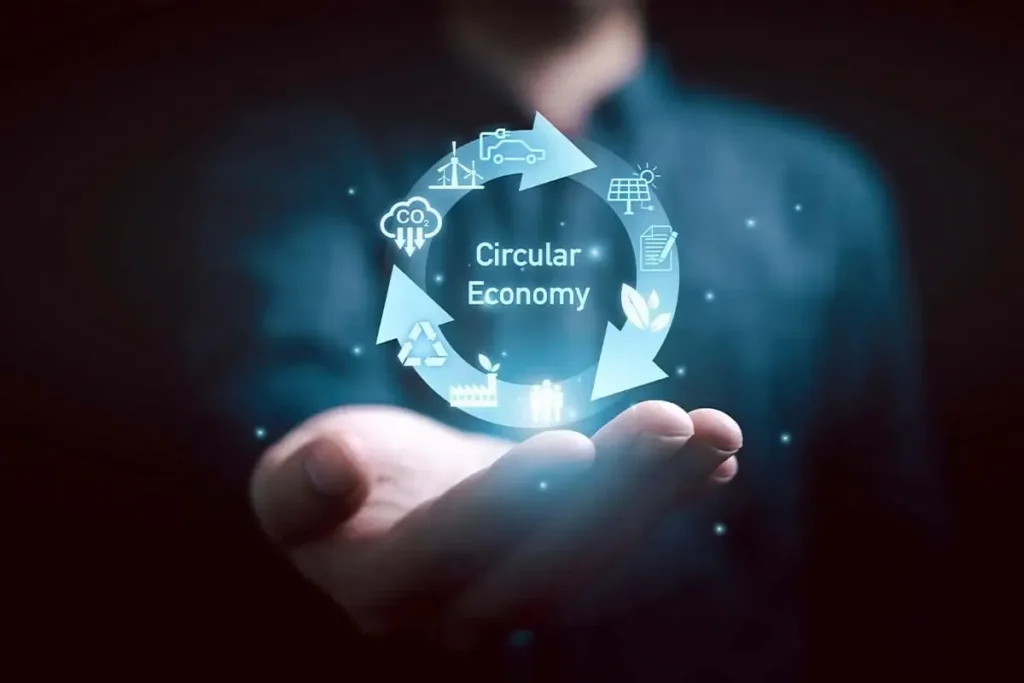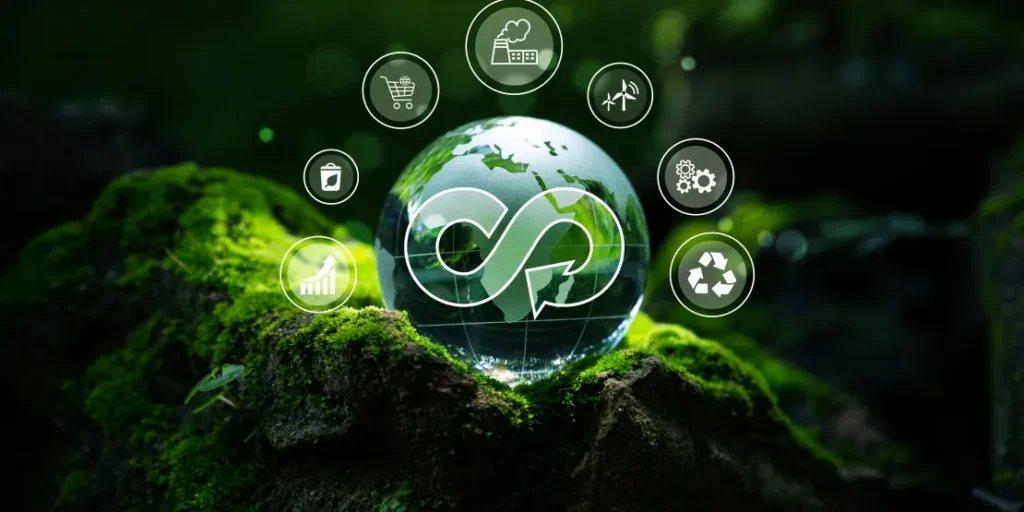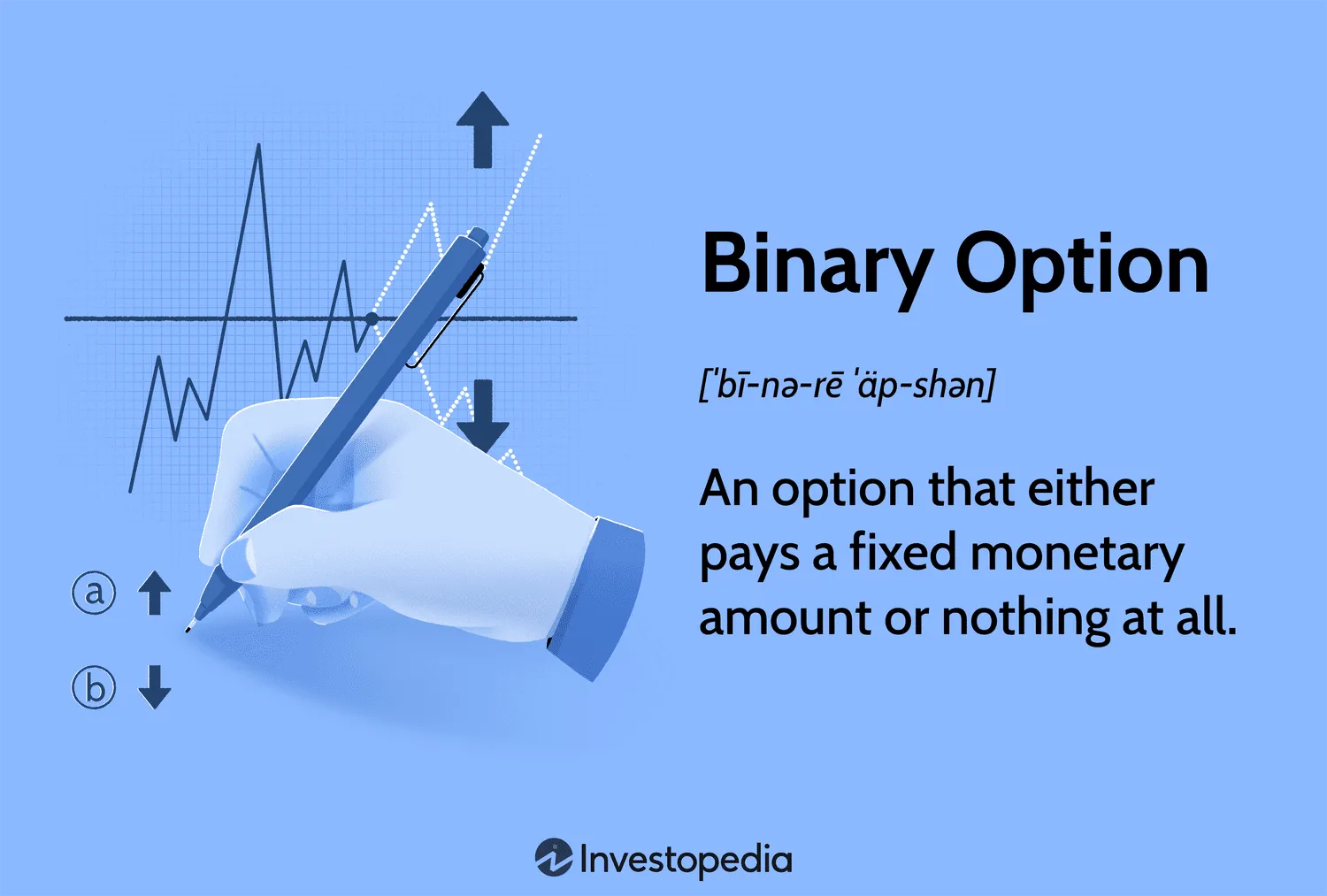Introduction
The world of business is evolving rapidly, and sustainability is no longer an option—it is a necessity. Organizations across industries are adopting practices that not only drive profits but also protect the environment and benefit society. One of the most effective models today is business sustainability with circular economy, a strategy that redefines how resources are used, reused, and recycled.
Instead of the traditional “take, make, dispose” model, the circular economy focuses on reducing waste, keeping products in use longer, and regenerating natural systems. This approach benefits businesses by lowering costs, improving efficiency, and building stronger customer trust.
In this article, we’ll explore how companies can embrace business sustainability with circular economy through practical strategies and actionable steps.

1. Understanding the Circular Economy Model
Before diving into business applications, it’s important to understand what the circular economy truly means.
- Linear Economy: Uses resources once and discards them.
- Circular Economy: Focuses on reuse, recycling, and designing products to last longer.
For businesses, adopting a circular model means rethinking supply chains, product design, and customer engagement to ensure that resources circulate within the economy instead of ending up as waste.
2. Reducing Resource Consumption
The first step toward business sustainability with circular economy is minimizing resource usage. Companies must adopt strategies that prioritize efficiency.
- Energy Efficiency: Switch to renewable energy sources like solar and wind.
- Water Management: Implement water recycling and reuse systems.
- Material Optimization: Design products using fewer raw materials without compromising quality.
Reducing resource consumption not only lowers operational costs but also strengthens a company’s reputation as a responsible, sustainable brand.
3. Designing for Longevity and Reuse
Traditional business models often encourage disposable products. A circular economy requires designing goods with longer lifespans.
- Durable Materials: Use high-quality, sustainable inputs.
- Repairable Products: Encourage customers to repair instead of replace.
- Modular Design: Allow parts to be upgraded or reused easily.
By focusing on longevity, businesses not only cut costs but also build trust with eco-conscious customers, fueling sustainable business growth.

4. Waste Reduction and Recycling Initiatives
Waste reduction is at the core of business sustainability with circular economy. Companies should create internal policies that minimize waste generation and maximize recycling.
- Closed-Loop Recycling: Reuse production waste in manufacturing processes.
- Reverse Logistics: Encourage customers to return used products for recycling.
- Zero-Waste Targets: Set goals to eliminate landfill contributions.
Businesses that champion recycling not only save resources but also create new revenue opportunities from recycled materials.
5. Building a Sustainable Supply Chain
A sustainable business cannot exist without a sustainable supply chain.
- Eco-Friendly Sourcing: Partner with suppliers who follow green practices.
- Transparency: Share sourcing details with customers to build credibility.
- Collaboration: Work with local suppliers to reduce transportation emissions.
A sustainable supply chain ensures that circular economy practices are embedded at every stage of production, from raw materials to end-users.
6. Embracing Innovation and Technology
Digital tools and innovative technologies can accelerate business sustainability with circular economy.
- IoT (Internet of Things): Track energy and resource usage in real time.
- AI & Big Data: Analyze patterns to optimize production and reduce waste.
- Blockchain: Increase supply chain transparency and traceability.
Innovation helps businesses scale circular practices while improving efficiency and profitability.

7. Educating and Engaging Customers
No circular economy strategy is complete without customer involvement. Businesses must educate and encourage their audience to participate in sustainability efforts.
- Awareness Campaigns: Inform customers about recycling and reuse options.
- Incentives: Offer discounts or rewards for eco-friendly behaviors.
- Sustainable Branding: Highlight eco-conscious efforts in marketing campaigns.
When customers feel like partners in sustainability, they are more likely to remain loyal, helping businesses grow and thrive.
Case Studies: Businesses Leading the Way
- IKEA – Introduced buy-back and resell programs to give furniture a second life.
- Patagonia – Focuses on repairing and recycling clothing to reduce waste.
- Unilever – Works on reducing single-use plastics and improving packaging recyclability.
These companies show how business sustainability with circular economy can drive profits while contributing positively to the planet.
Additional Benefits of Circular Economy for Businesses
- Cost Savings: Lower expenses through reduced waste and energy use.
- Innovation: Opens new business models and product opportunities.
- Brand Loyalty: Eco-conscious customers prefer sustainable brands.
- Regulatory Compliance: Stay ahead of government sustainability regulations.
- Global Impact: Contribute to solving climate change and resource scarcity.
Practical Tips for Getting Started
- Start small with waste reduction projects.
- Partner with recycling companies or local organizations.
- Train employees on sustainable practices.
- Measure results using sustainability metrics.
- Scale successful strategies across departments.

Conclusion
The shift toward sustainability is no longer optional—it is the future of business. Embracing business sustainability with circular economy allows companies to reduce waste, optimize resources, and innovate responsibly.
From redesigning products for longevity to engaging customers in eco-friendly practices, each step builds resilience and ensures long-term profitability.
Businesses that adopt circular models today will become tomorrow’s leaders, creating not just profits but also a healthier planet. The time to act is now—because sustainable business growth is the key to success in the modern world.





